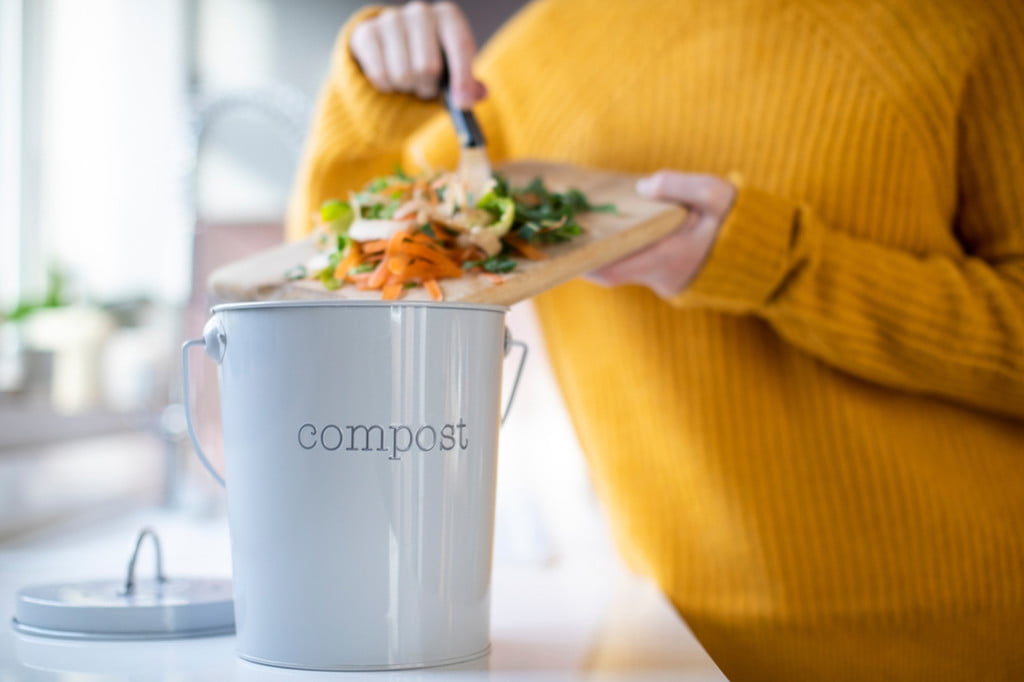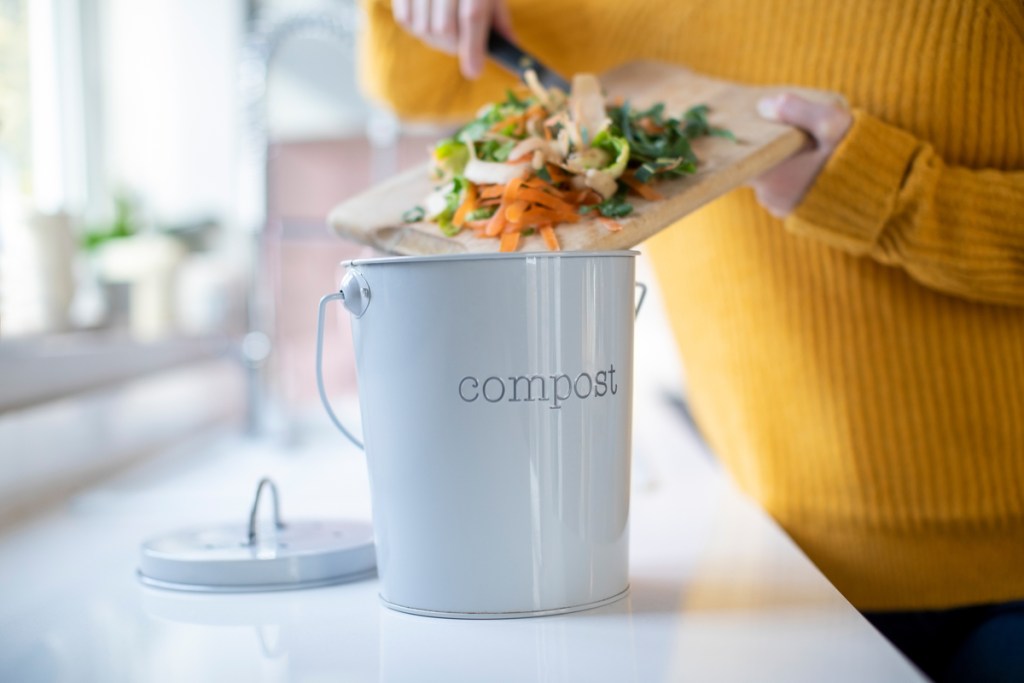If you’re looking for a way to reduce your food waste and nourish your plants, then composting is one amazing option to do just that. Composting has a certain image, though — large bins or piles outdoors that have to be turned with pitchforks and spread with shovels. What if you don’t have the space for that? Wonder no more; we’re going to walk you through how you can compost in an apartment and why you should.

How much space do you need to compost?
The answer to this question depends on how much compost you want. Larger gardens will need more compost to fully cover, while smaller gardens and container gardens will need less. It’s also important to consider how much you’ll be adding to your compost. If you produce a lot of scraps by cooking meals of mostly fresh produce for an entire family, you’ll need a bigger bin. However, if you’re only producing a few scraps, such as just cooking for one or two, you’ll need much less space.
This is good news if you live in an apartment. Most likely you’ll be producing fewer scraps and have a smaller garden or container garden to feed. A space that is a square foot or two at the base and another two or three feet tall will be big enough. An unused cabinet works great, but you can also tuck your bin into a corner, stack it onto something else, or make use of a balcony space if available.
Set up a system that works for you
The basic compost bin is a container of the preferred size with holes in the top, sides, and bottom for air flow and excess water evaporation and drainage. If you’re keeping your bin indoors, you can double the amount of air flow holes in the sides and top and forgo the bottom holes. Or, set your bin in or just above some type of tray to catch water as it drains so you can dispose of it later. Your holes don’t need to be very large, just half an inch will do.
Depending on your preferences and needs, you have a few more options. Some people keep a second, smaller bucket in their kitchen for collecting scraps. This allows you to keep your bin tucked away, reduces your trips to the bin, and can help keep your bin balanced.
Using your compost bin
Start your compost off with as close to even as possible a mix of brown material and green material. Brown material is dried organic material like newspaper, paper, straw, hay, and dried leaves. Green material is fresh organic material like fruit peels, vegetable scraps, and grass clippings. You can also add some soil to jump start your compost. If you use potting soil, try to get some without any fertilizer already mixed in.
Whenever you add anything to your compost, stir or mix it well to add in air. You can mix it with a shovel or sturdy stick. Another option is to secure a lid or covering over the top, turn it on its side, and roll it back and forth for a couple minutes. If you’re doing this indoors, you may want to lay an old sheet, drop cloth, or blanket in case there are spills. Keeping your compost loose is crucial for even decomposition and to keep it from smelling. If your compost begins to smell, it likely needs more air flow or has an imbalance of brown vs. green material.

What are the benefits of composting?
Compost contains all the nutrients that rich soil naturally has and is as organic as the scraps you put into it. This is great for indoor plants since their soil isn’t being replenished over time the way it would in the wild. Since you know what has gone into it, it also gives you total control and peace of mind over how organic your plants actually are.
Composting also has environmental benefits. According to the United States Environmental Protection Agency, in 2018 alone the United States generated 292.4 million tons of municipal solid waste, which includes food scraps, packaging, broken furniture, and other similar items that commonly end up in landfills. Of that total, they found that roughly 32 percent was composted or recycled, while 50 percent went to the landfill.
A lot of waste comes from corporations, and, unless you’re the CEO of a major company, that may seem like a daunting problem to solve. If you aren’t sure where to start, start at home. Composting in your apartment is a small step, but it is a step. Getting involved in your community and reaching out to encourage others to do their part is a great way to increase that 32 percent — and decrease the 50 percent.
Anyone can compost, whether you have a sprawling yard or a small apartment. Your plants will thank you for the boost in nutrients, especially indoor plants. If you want, you can even tailor your compost to the specific needs of your plants, although a balanced compost will work for just about any plant. Remember to give your compost plenty of air and a balanced diet of brown and green material, and your compost will be just fine.



